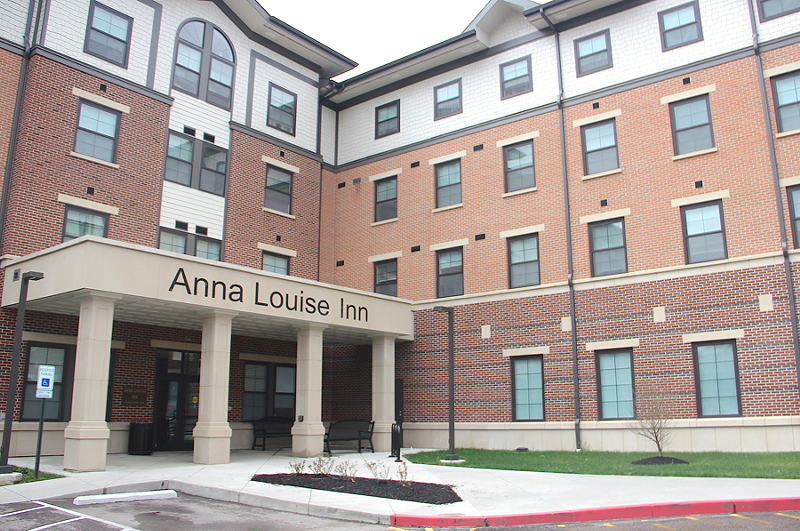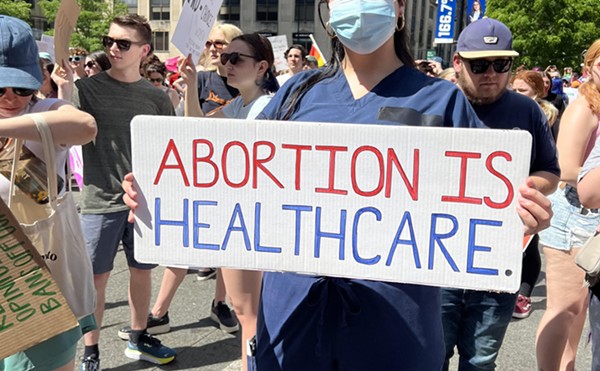
A long-ago felony conviction and a recent shoulder surgery make finding work difficult for Adams, and her tidy, comfortable subsidized apartment at the Anna Louise Inn is vital to her recovery and continued sobriety, she says. These days, her two grown daughters come to visit regularly and stay over on occasion.
“I couldn’t find a place to live, so I spiraled and stayed homeless for a long time,” Adams says. “This takes a lot of burden off of me, and it took a lot of burden off my family. My daughters got tired of watching the news, hearing about the police finding bodies. They’re happy that I’m here. It’s really become my home.”
Adams’ quest for stability isn’t the only story about need for affordable housing in Cincinnati, of course. An increasing number of people from many walks of life — from working families to seniors to young people just out of school — find themselves struggling to pay the rent, which averages $863 a month in Greater Cincinnati.
But as need grows, proposed policies by President Donald Trump could mean less housing for low-income people here and across the country.
At least 40,000 more units of affordable housing are needed in the Greater Cincinnati area, according to a recent study by the Xavier University’s Community Building Institute and the local chapter of Local Initiatives Support Corporation, a nonprofit that works to improved distressed communities.
While rents in Hamilton County rose by 46 percent between 2000 and 2014, incomes rose only 19 percent. Federal standards say no more than 30 percent of a household’s income should go toward rent. The Xavier study, however, found that half of Hamilton County renters pay more than that. And one in four renters are severely cost burdened, paying more than 50 percent of their income to rent.
Similar shortages in affordable housing have hit cities across the country hard over the last decade. Despites this, Trump has proposed eliminating the Interagency Council on Homelessness, which helps coordinate federal housing efforts ,and promised more than $6 billion in cuts to the U.S. Department of Housing and Urban Development. Those cuts look likely to take a chunk out of programs like Section 8, which subsidizes rents paid to private landlords for thousands of people in the city.
Beyond those cuts, other Trump policy proposals are already having unintended, but potentially enormous, consequences. A promise to cut the corporate tax rate to 15 percent — down from a statutory rate of about 35 percent — has created uncertainty around the main mechanism for developing affordable housing in Cincinnati.
Called the Low-Income Housing Tax Credit, or LIHTC, a decades-old program awards credits to nonprofits and developers looking to make new affordable housing or to rehab old buildings for that purpose. Affordable housing providers then use those credits to attract investors, who are able to take advantage of the tax breaks over what is usually a 30-year period.
Adams’ apartment in the Anna Louise Inn is a direct result of those credits. The women’s shelter was originally downtown but moved to a new location in 2015 after a protracted fight with insurance company Western & Southern, which is converting the Inn’s original site into a luxury hotel. The new location in Mount Auburn was heavily funded using LIHTC.
“Without the low-income tax credits, this building wouldn’t be here, plain and simple,” says Cincinnati Union Bethel Chief Financial Officer Chad Nieter, who says the credits funded about 70 percent of the building’s construction. “We’ve applied for other low-income tax credits for other projects this year. It’s very important funding for low-income projects here in the city and around the country.”
But uncertainty around corporate tax rates means potential investors aren’t willing to pay as much for the credits these days, putting future projects that could bring more affordable housing to Cincinnati in jeopardy.
The Ohio Housing Finance Agency administers the federal funds in this state, using a rigorous application process to determine which projects are awarded the credits. Incoming OHFA Executive Director Sean Thomas says instability around corporate tax rates has meant a 5 to 15 percent loss in value for LIHTC. That’s translated into funding gaps between $500,000 to $1.5 million for projects in the state.
“Investors of the credits have either put a hold on their commitments or renegotiated their existing commitments for projects that have not closed on their financing,” Thomas says. “A lower corporate tax rate may reduce the value of the credit, and therefore, investors are trying to plan accordingly.”
Locally, four projects awarded LIHTC credits last year lost about $380,000 due to the credits’ devaluation. Those included two projects in Over-the-Rhine by Over-the-Rhine Community Housing, one in Avondale by The Community Builders and another in Bond Hill by Gardner Capital Development.
OHFA stepped in with that money, pulling it from 2017 credits. The agency did so for some 35 projects across the state on March 9 to the tune of more than $3 million. The hope, the agency says, is that the market will stabilize by next year. But the current valuations mean that five to seven fewer projects will receive funds next year, resulting in 200-500 fewer affordable housing units across the state.
There could be a partial solution on the way — legislation in the U.S. Senate that would boost funding for LIHTC by 50 percent starting next year. That bill, co-sponsored by U.S. Sens. Rob Portman, a Republican from Ohio, and Cory Booker, a New Jersey Democrat, has bipartisan support. But the legislation, which also includes a number of other administrative fixes to the LIHTC program, faces an uncertain path through Congress.
A similar bill in the staunchly conservative House doesn’t boost funding, but instead simply makes long-needed adjustments to the way the program is administered.
OHFA Legislative Affairs Director Guy Ford says the program’s nature — which involves federal, state and private collaboration — makes it appealing to liberals and conservatives alike.
“It really is a bipartisan issue,” Ford says. “When Republicans (see something like the Anna Louise Inn) and see the results of the program, they understand it’s a great program.”
That appeal gives the Senate bill a fighting chance in a very divisive Congress. But Ford points out that the bill was drawn up before the credits began to devalue.
“The increase in resources (the Senate) bill proposes would be very helpful,” he says. “But it will be less better than it could be, so to speak.”
There are other efforts on the way to combat the growing gap between available housing and what Greater Cincinnati residents can afford. Columbus-based Huntington Bank recently announced it would invest $17 million in tax credit-based affordable housing development in Greater Cincinnati this year and next.
And the city is taking its own steps toward better housing affordability. Cincinnati Vice Mayor David Mann says city officials are working on ways to provide more local funds for affordable housing, including money for a potential eventual housing trust fund. Mann says that effort should be rolled out soon.
“The way these (cost-burdened) families are paying the rent is by shortchanging the family of food and other necessities,” Mann says. “We’re learning that when children grow up in the trauma that is being in the midst of family crises presented by the lack of affordable housing, it has life-long impacts.” ©





